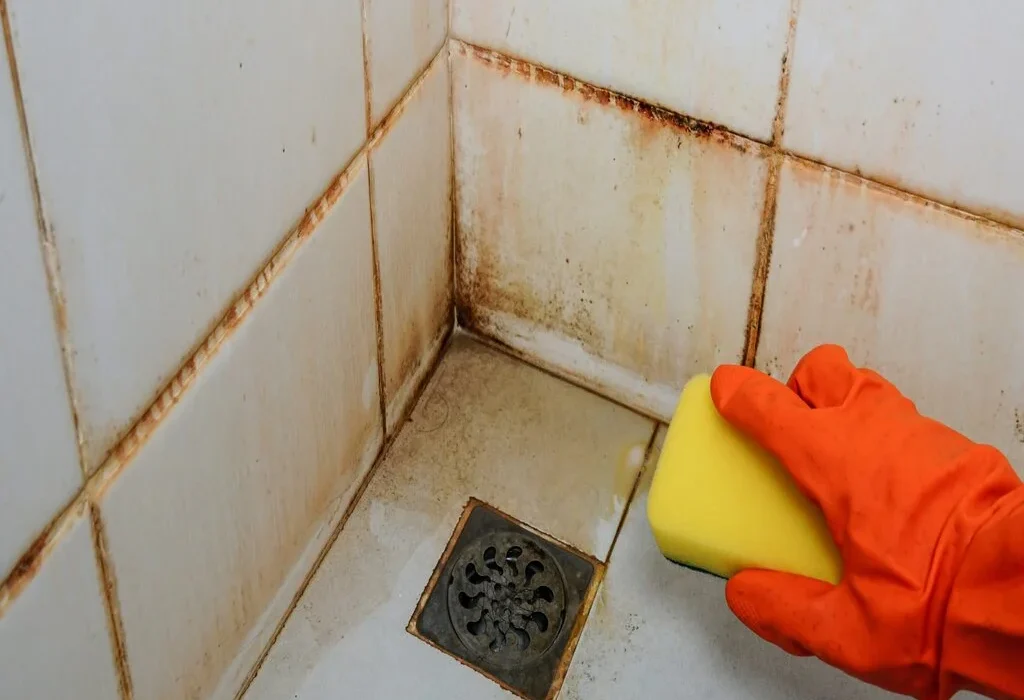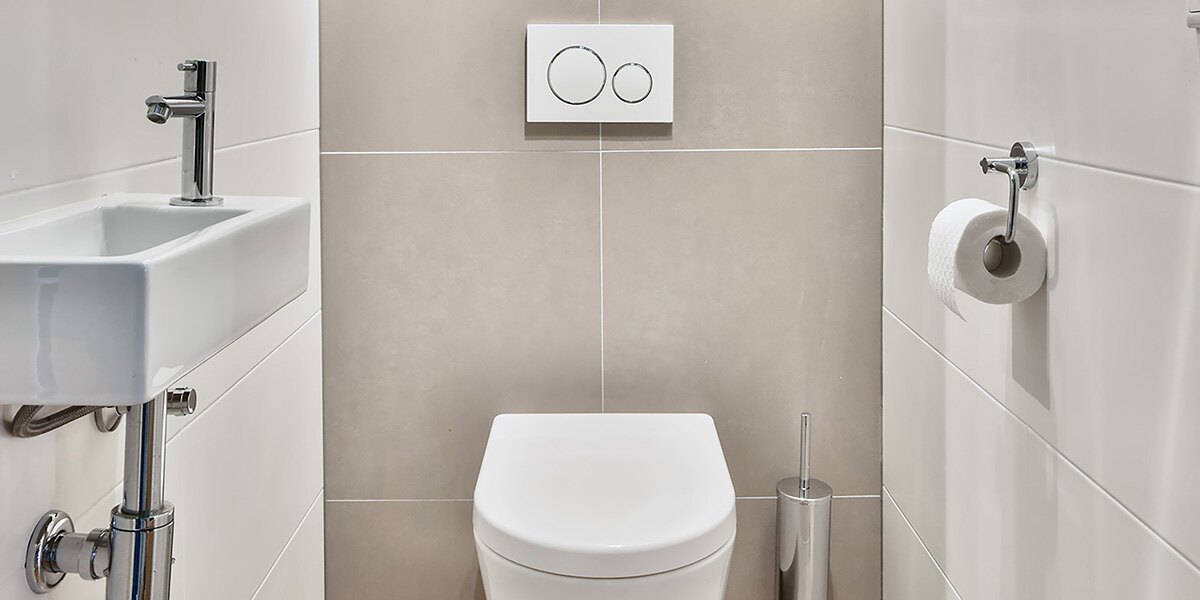
Your bathroom sees a lot of moisture. If you have a large family all using the same bathroom, the constant water usage will leave endless moisture droplets on your walls, ceiling, and fabrics. Even if you’re the sole occupant of your home, one long, hot bath or shower daily leaves your bathroom in a similar condition.
If you’re not cleaning your bathroom regularly or effectively, you’ll begin to notice gunky or even fuzzy buildup on your fabric surfaces, in your grout, or around your tub. Resulting from regular condensation, the formulation of mold is possible and actually pretty common. But this is the real question: “Is bathroom mold dangerous?”
To learn more about bathroom mold, keep reading and contact the plumbing experts in Mustang from Champion Plumbing for more information and assistance.
Is Bathroom Mold Dangerous?
In most cases, bathroom mold is more unattractive than anything else. It takes away from the aesthetics of your lavatory and is disgusting to look at or accidentally touch. However, depending on your health and the type of mold you have, you may have a serious condition on your hands.
How Does Bathroom Mold Become Dangerous?
Despite the type of mold you have, each kind evolves to the point of reproduction. Leaving mold untreated will cause it to produce metabolites, which consist of nanosized mold spores. These mold spores are fuzzy and ready to become airborne, attaching to other parts of your home and making their way into your lungs.
Still, toxic, fuzzy mold only becomes a problem when different forms of bacteria are evident and the mold feeds enough to reproduce and create mycotoxins. Mold originates from and feeds on several particles in the shower, including:
- Dead skin cells
- Soap scum
- Dirt
- Dust
- Hair
Who Does Mold Affect?
Is bathroom mold dangerous to everyone? Once it begins producing mycotoxins, mold growth may affect anyone breathing it in. While many may not feel the repercussions, any individual exposed to it is at an increased risk of developing asthma or other respiratory concerns.
On the other hand, those who already have lung cancer, asthma, pneumonia, allergies, or other respiratory diseases will see immediate reactions to the mycotoxins, including:
- Skin and eye sensitivity
- A stuffy or runny nose
- Redness or itching
- A slight fever
- Coughing and sneezing
- Shallowed breathing
What Kind of Shower Mold Do I Have?
If you have any of the symptoms stated above, the chances are you have Stachybotrys, also known as black mold, in your shower. This type of mold is the most dangerous of all residential mold since it heightens severe symptoms in those with illnesses and increases the chance of nausea and headaches. While there are different forms of mold in the Stachybotrys genus, they all usually have a black or dark green color.
Other types of mold found in households include Cladosporium, Aspergillus, and Penicillium.
- Cladosporium
○ While usually found in plants, this type of mold is common in any indoor or outdoor space. It usually has a brown or olive green tinge and creates a branching pattern.
- Aspergillus
○ Aspergillus doesn’t pose a threat to a strong immune system. However, it weakens those with respiratory concerns. This mold type is identifiable by its powdery texture and muted yellow, purple, olive, or orange color.
- Penicillium
○ Penicillium is commonly found on spoiled food but occurs in your natural environment. It usually starts off white but, if left untreated, turns a blue, green, yellow, or pink tint with age.
How Can I Get Rid of Mold and Prevent Regrowth?
Now that we’ve answered, “Is bathroom mold dangerous?” it’s time to decipher the correct way to dispose of and prevent the regrowth of mold buildup. Not surprisingly, the best way to rid yourself of the problem is to maintain a sanitary and healthy atmosphere.
Make it part of your weekly cleaning schedule to take a bucket of warm water and a dense scrubbing brush to clean your grout and tiles. Also, add baking soda, vinegar, or mold-deterring products to your cleaning regimen to eradicate soap buildup and other contaminants in which mold derives and feeds.
Other things you should consider are as follows:
Bathroom Leaks
What’s the point of vigorously cleaning the walls and ceiling in and around your shower if you have a leaky faucet or showerhead? Water damage from a constant leak leads to expedited mold growth, and it also increases the number of contaminants in which mold can feed.
Instead of converting to daily cleanings, call expert plumbers like the ones at Champion Plumbing. Whether you’d like to make an appointment for a small leak or use our emergency plumbing service available 24/7 for larger repairs, we’ll be there on time every time.
Disinfect Soft Surfaces
As said before, mold reproduces and detaches from its place of origin. It then travels and attaches itself to other damp places with little ventilation. If you have damp, dirty clothes sitting in your laundry basket or used towels on your bathroom floor, mold spores will immediately attach themselves.
Hanging your moist towel on a rail or hook to dry off and washing dripping, dirty laundry right away will prevent the spread of mold and mildew. Other surfaces in constant contact with high bathroom humidity and water droplets also need the same care. These surfaces include:
- Bathroom mats
- Hand towels
- Shower curtains
- Window curtains
- Plants
Keep Humidity Low
Having high humidity and low ventilation will quickly have you asking yourself, “Is bathroom mold dangerous?” That’s because you’ll promptly notice mold growing at exponential rates in these stuffy corners since they get the chance to latch on to other surfaces without resistance from airflow.
However, enhancing ventilation is a quick fix for your high-humidity bathroom. The simplest fix is to crack open a window during showers to release steam and mugginess from the room. Still, depending on the size of your bathroom and the number of windows available for use, your best bet would be to invest in exhaust fans.
Installing an exhaust, or shower fan, on your ceiling will move the air toward an appropriate exit point, aiding in the prevention of mold growth and maintaining air quality. This is an essential aspect of maintaining your bathroom plumbing fixtures and ensuring their longevity.
We also suggest you keep your fan and dehumidifier on and your windows open for half an hour after your shower or bath to take care of any remaining humidity in the area.
Champion Plumbing Vs. Your Mold and Other Plumbing Concerns
At Champion Plumbing in Mustang, OK, we’ve seen our share of mold and mildew problems since founding our company in 2015. We’ve also heard every client with a mold concern ask the inevitable question, “Is bathroom mold dangerous?”
We’re ecstatic to say that while there are cases of irritation in those with weakened immune systems or respiratory problems, it’s not a life-threatening bathroom ailment. What’s more, you can always rely on us to give you the lowdown on what causes mold and how to prevent it.
However, our expertise doesn’t end there. We provide an abundance of services, from toilet and sump pump repairs to entire bathroom remodels.
Call us to learn more about sewer line repair services, gas line repairs, and other residential and commercial plumbing issues. We’ll provide same-day services and a 100% satisfaction guarantee when you dial 405-889-1318Click to Call – Click to Call today!






